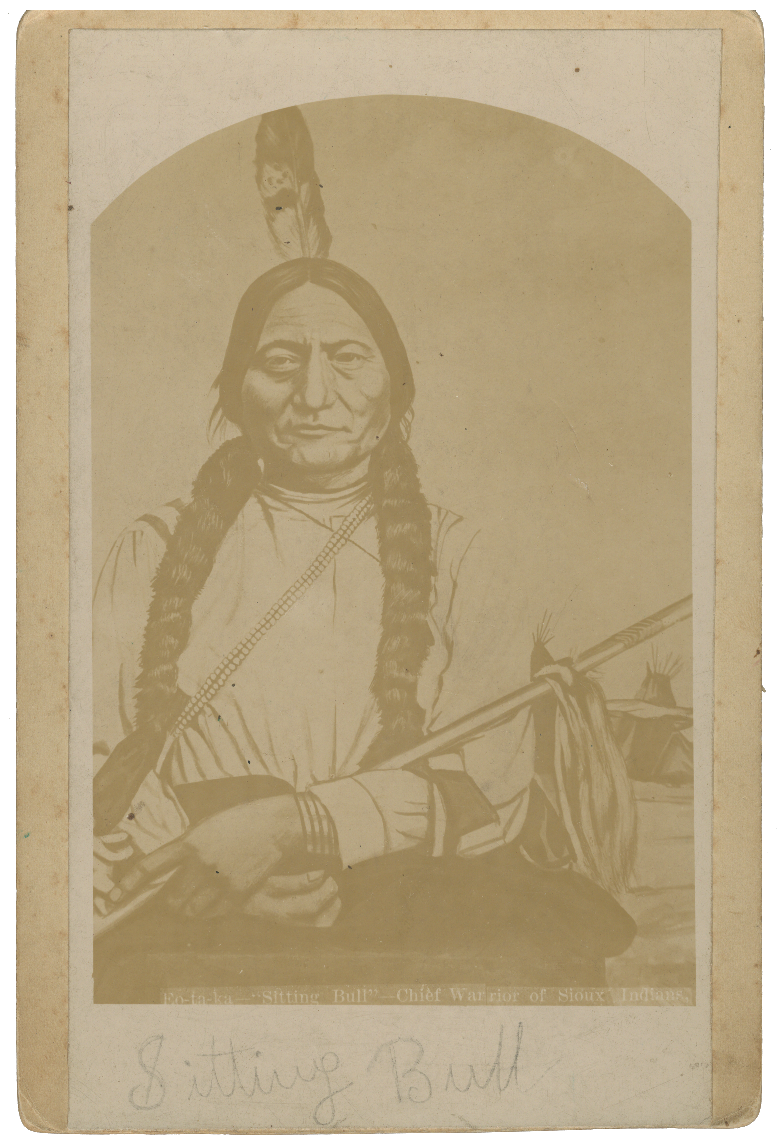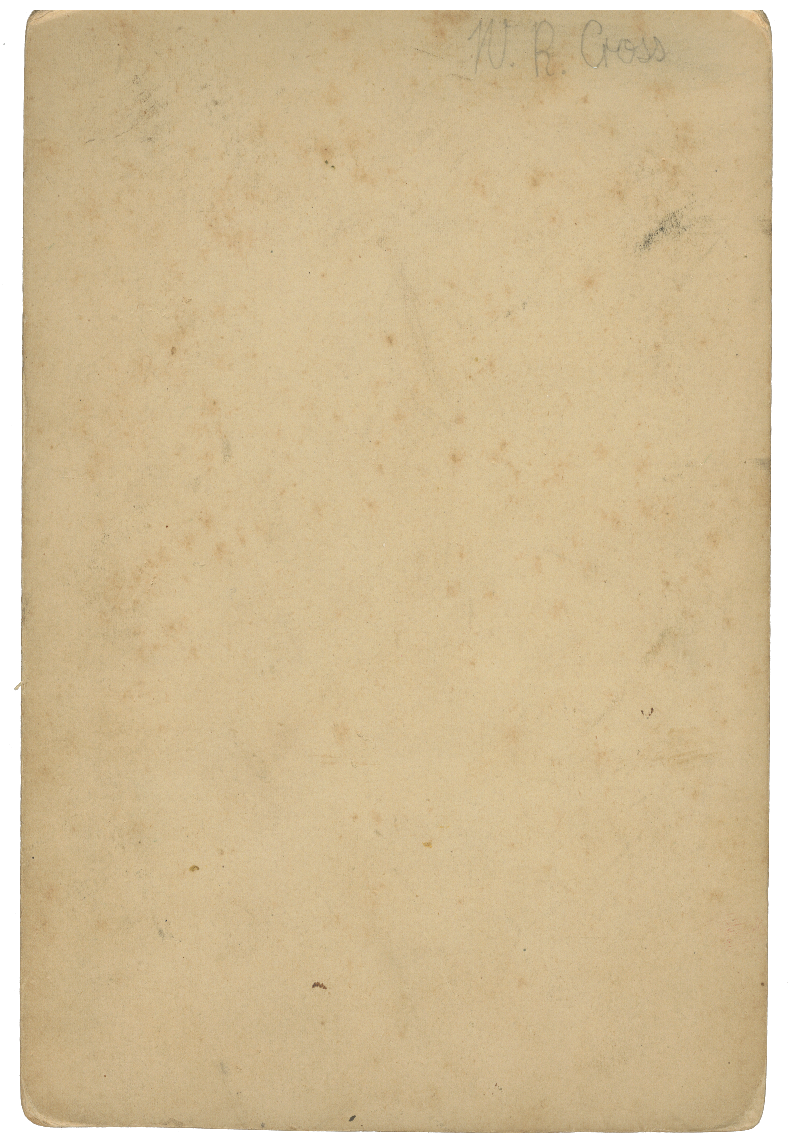Sitting Bull
Sitting Bull
Signed Cabinet Card - 1881
A very rare signed cabinet card of Chief Sitting Bull by Orlando Scott Goff, circa 1881. The first image ever taken of the Hunkpapa medicine man shortly after his surrender at Fort Buford, Dakota Territory in the summer of 1881, signed in pencil.
The seated Sitting Bull wears a single hair feather and holds a long stemmed peace pipe. Printed text above the signature reads “Eo-ta-ka—‘Sitting Bull’—Chief Warrior of Sioux Indians.” On the back is the signed name of “W[illiam] R. Cross,” the Nebraska photographer who assembled a series of photos as a chronicle to Sitting Bull’s capture and incarceration (though this photograph was taken by D. F. Barry). The image itself measures 4¼” x 7¼”. Includes Letter of Provenance.
Sitting Bull (1831-1890) was a Hunkpapa Lakota holy man who led his people as a tribal chief during years of resistance to United States government policies. Before the Battle of the Little Bighorn, Sitting Bull had a vision in which he saw the defeat of the 7th Cavalry under Lt. Col. George Armstrong Custer on June 25, 1876. Sitting Bull’s leadership inspired his people to a major victory. Months after winning that decisive battle, Sitting Bull and his group left the United States for Wood Mountain, Northwest Territories (now Saskatchewan), where he remained until 1881, at which time he and most of his band returned to US territory and surrendered to U.S. forces.
After working as a performer with Buffalo Bill’s Wild West show, Sitting Bull returned to the Standing Rock Agency in South Dakota. Because of fears that he would use his influence to support the Ghost Dance movement, Indian Service agent James McLaughlin at Fort Yates ordered his arrest, during which Sitting Bull was killed on the Standing Rock Indian Reservation.


